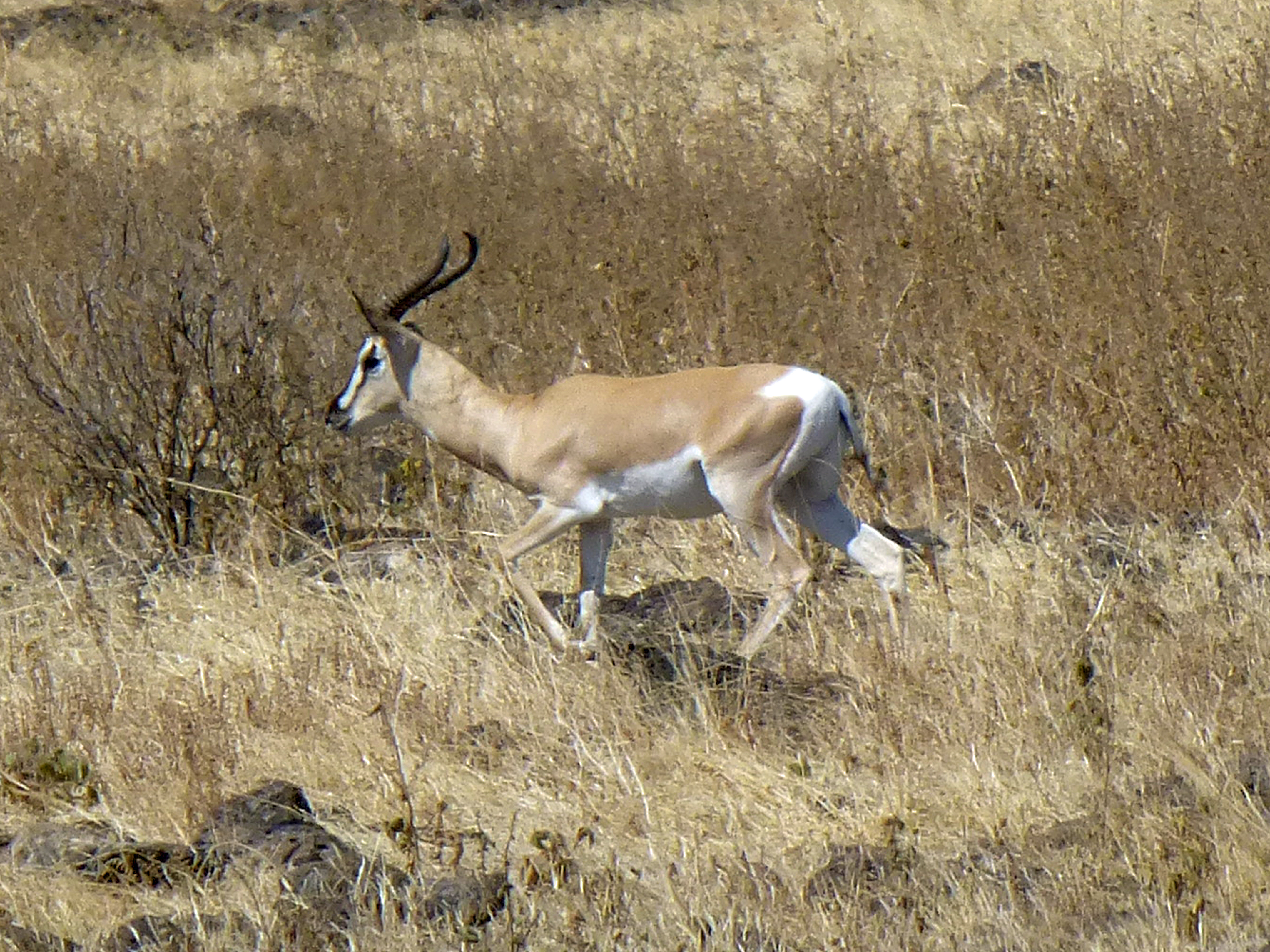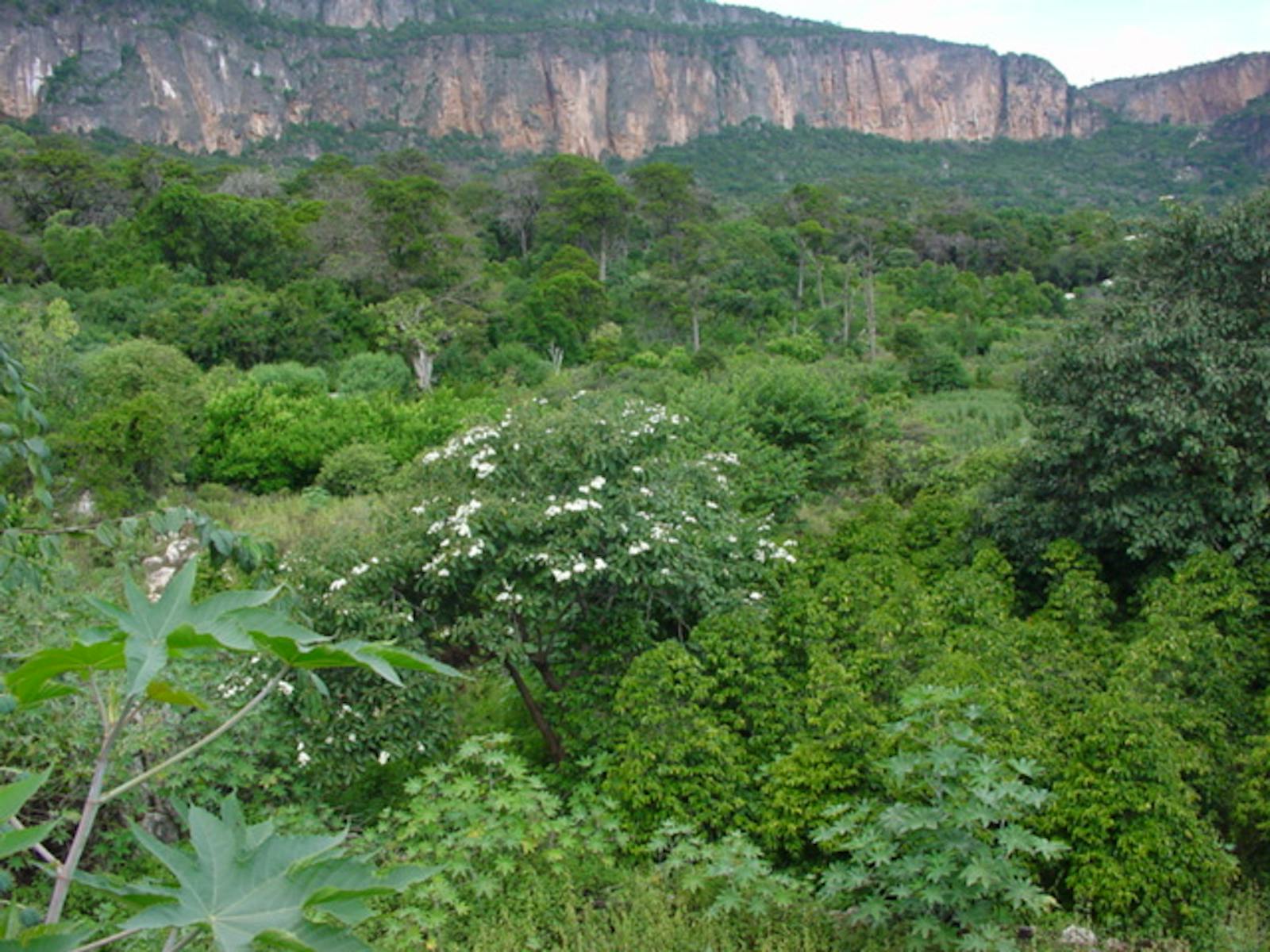Somali Montane Xeric Woodlands
The ecoregion’s land area is provided in units of 1,000 hectares. The protection goal is the Global Safety Net (GSN1) area for the given ecoregion. The protection level indicates the percentage of the GSN goal that is currently protected on a scale of 0-10.
Bioregion: South Red Sea & Gulf of Aden Coastal Drylands (AT22)
Realm: Afrotropics
Ecoregion Size (1000 ha):
6,401
Ecoregion ID:
106
Conservation Target:
13%
Protection Level:
0
States: Somalia
In the ancient world, frankincense was one of the most valuable substances, worth more than its weight in gold. Boswellia frereana, a species of Frankincense, is endemic to this ecoregion. The resin obtained from the trees trunk hardens after being exposed to air. The resin is traded for uses in perfumery and for medicinal purposes.

The flagship species of the Somali Montane Xeric Woodlands ecoregion is the Boswellia frereana. Image credit: Creative Commons
The ecoregion stretches along the coast of Somalia through the regions of Somaliland and Puntland. It extends from the Shimbiris Mountain (2,416 m, the highest point in Somalia) east of Hargeysa through the northern mountains of Somalia to Raas Caseyr, covering the very tip of the Horn of Africa, and continuing some 300 km south along the Somali coastal plain. Elevations range from sea level to the summit of Shimbiris at 2,416 m, the highest point in Somalia. There are also extensive coastal plains and sizeable mountain escarpments with areas higher than 1,500 m. In general, the climate is hot and dry, with considerable seasonal temperature variations. Mean temperatures range from 21°C to 30°C in the lowlands to 9°C to 21°C in the mountains.
The mean rainfall of the low-lying areas is less than 200 mm annually. The mountains receive more rainfall, for example the escarpment near Maydh receives over 650 mm each year, mainly during the winter, which is the highest for Somalia. Most of the higher mountain areas are composed of limestone and gypsum, covered with free draining thin rendzina lithosols that retain little moisture outside the rainy seasons.
The vegetation of this ecoregion varies due to elevation, rainfall, and soil or rock types. At lower elevations, xerosols and yermosols have developed, particularly on the lowland coastal plains bordering the Indian Ocean. Here, the landscape is a desert and there is little to no vegetation. In subcoastal areas woody vegetation becomes denser, with dominant species from the genera Acacia, Commiphora, and Boswellia. Along the sides of the escarpment Macchia-like evergreen and semi-evergreen scrub occurs with species such as Dracaena ombet, Cadia purpurea, Buxus hildebrandtii, and Pistacia aethiopica. At the highest altitudes remnants of Juniperus forest grow, with canopy dominant species of Juniperus procera, Olea europea, Dodonea viscosa, Cadia pupurea, and Sideroxylon mascatense.

Gazelle. Image credit: Creative Commons
The biological values of the ecoregion are high and several hundred endemic plants are found, including relict elements of arid and semi-arid groups; for example, five endemic species of Helianthemum and one endemic species of Thamnosma. Also, the monotypic genus Renschia is a strict endemic as is Boswellia frereana, an economically important frankincense-producing tree. Numerous endemic succulent plants also occur, such as Euphorbia mitriformis, Aloe eminens, and Huernia formosa. The most endemic-rich zone is in the high mountains, but plant endemics are also found at lower elevations.
There are also endemic species in different vertebrate groups. Three strict endemic reptiles occur, the snakes Scortecci’s diadem snake and Leptotyphlops reticulatus, and the lizard Pseuderemias savagei, with two other reptiles nearly-endemic to the ecoregion. Three strict endemic birds are found: the Somali pigeon, the Somali thrush, and the Warsangli linnet all found in the North Somali Mountains Endemic Bird Area. The Somali thrush and Warsangli linnet are confined to juniper forests at higher elevations. Three small mammal species are also considered near-endemics: Somali hedgehog, Louise's spiny mouse, and Somali elephant shrew. The rare beira antelope, Salt’s dikdik, Sömmerring's gazelle, and Speke's gazelle are also found here and in a few other ecoregions in the Horn of Africa.
The ecoregion has no formal protection, but the vegetation of most escarpment areas is still intact, even if small-scale logging of Juniper trees is going on. The major threats to the ecoregion are thought to be intensive grazing by goats and other livestock (including cattle in the mountains), and cutting of trees for timber, charcoal, fuel wood, and pole constructions, particularly Juniper trees. Frankincense extraction is another major threat. The prolonged period of political instability in the ecoregion has also resulted in the breakdown of management authorities set up to conserve forests and wildlife. Hunting of larger mammals is also a long-standing problem, particularly antelopes who are also threatened by grazing competition with livestock.
The priority conservation actions for the next decade will be to: 1) provide alternative, sustainable energy sources to charcoal and fuel wood, for example solar and wind energy; 2) encourage alternative livelihoods including beekeeping, as well as promoting sustainable agriculture practices including rotational grazing; and 3) work with governing authorities to establish conservation action plans.

Salt's dik-dik. Image credit: David Castor, Creative Commons
Citations
1. Burgess, N., Hales, J.A., Underwood, E., Dinerstein, E., Olson, D., Itoua, I., Schipper, J., Ricketts, T. and Newman, K. 2004. Terrestrial ecoregions of Africa and Madagascar: a conservation assessment. Island Press.
2. Ullah, S. and Gadain, H. 2016. National Biodiversity Strategy and Action Plan (NBSAP) of Somalia. Somalia: FAO.
3. Mumuli, S. O., Alim, M. and Oduori, G. 2010. Monitoring of the Golis mountain forest in Somalia. FAO-SWALIM. Project Report No. L-18. Nairobi, Kenya: SWALIM.
4. Badria, F.A. 2015. Frankincense (Heaven’s Gift) — Chemistry, Biology, and Clinical Applications, Evidence-based Strategies in Herbal Medicine, Psychiatric Disorders and Emergency Medicine, Dr. Farid Badria (Ed.), InTech, DOI: 10.5772/59006.




